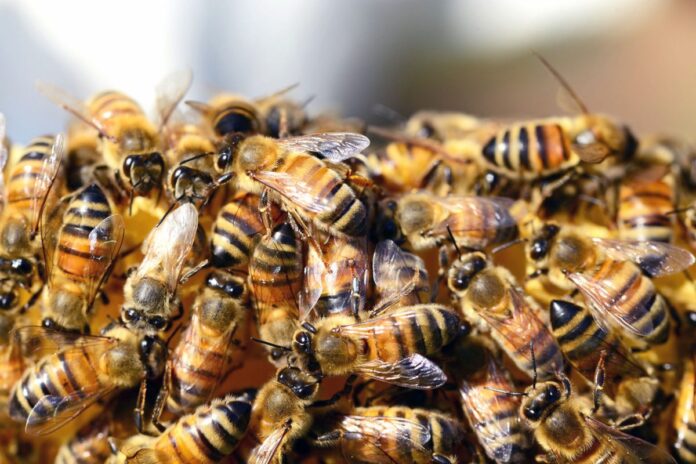HARLINGEN — Six people were hospitalized Sunday after a mass bee attack at Adolph Thomae Jr. County Park led to the stinging of dozens of park visitors.
All six people who were hospitalized have been released, Cameron County Parks Director Joe E. Vega said yesterday.
“The bees in this case were inside an informational kiosk, a wooden structure,” Vega said. “From the size of the honeycomb, it appeared to be a recently established hive.”
Bee attacks can occur anywhere in South Texas — parks, farm fields and backyards.
Officials at both the county and state level often post warnings about the possibility of attacks by aggressive African-European honeybee hybrids. The African bees were released in Brazil several decades ago, and have marched northward as they interbred with regular honeybees.
“At this time we still don’t know exactly what caused the bees to become aggressive,” Vega added. “What we do know is that during the spring bees tend to be more active and are often seen swarming, searching for a place to establish a hive.”
Vega said prior to Sunday’s incident there had been no formal reports of any recent bee activity at the park.
“Last week during Texas Week, we experienced larger volumes of patrons in the park and did not have any bee-related incidents,” Vega said. “One very important thing to keep in mind is that the park is located on a wildlife refuge (Laguna Atascosa) and bees are constantly moving through the area.
“The best advice we can give to someone who encounters an area of elevated bee activity is to leave the area immediately and report it to the nearest park official,” Vega said.
The Rio Hondo Fire Department responded to the Sunday incident.
Last Thursday, six City of Pharr workers were stung by a swarm of bees as they performed maintenance work including mowing at a cemetery. The workers were treated at a hospital and released.
Last year, an 85-year-old Raymondville man was found dead after Africanized bees stung him about 200 times while he was walking near a day care center.
Also in 2016, an elderly Mission man was critically injured in a bee attack. In 2007, a Mission man died after being stung more than 800 times by bees.
In 2015, an agricultural worker who was trying to fix his tractor died following a bee attack near Rio Hondo.
In 2011, an 82-year-old man died after being attacked by bees at the Brownsville Shrimp Basin.
Africanized bee facts
- The Africanized bee, also known as the Africanized honeybee and known colloquially as “killer bee,” is a hybrid of the Western honeybee species (Apis mellifera), produced originally by cross-breeding of the African honeybee (A. m. scutellata), with various European honeybees.
- The Africanized honeybee was first introduced to Brazil in the 1950s, in an effort to increase honey production. But in 1957, 26 swarms accidentally escaped quarantine. Since then, the species has spread throughout South America, and arrived in North America in 1985. Hives were found in South Texas in 1990.
- Africanized bees are typically much more defensive than other races of bees, and react to disturbances faster than European honeybees. They can chase a person a quarter of a mile, and have killed some 1,000 humans. They also have killed horses and other animals.
- There is no difference in appearance between Africanized bees and regular Western honeybees. Their more aggressive behavior is a marker for identification.
Source: Wikipedia




